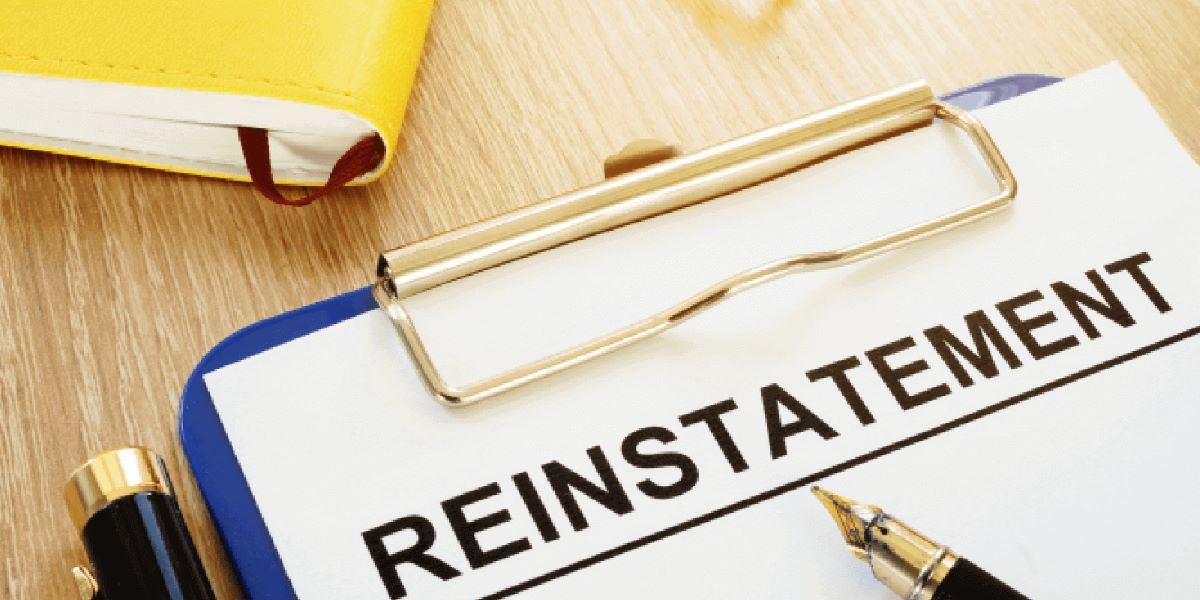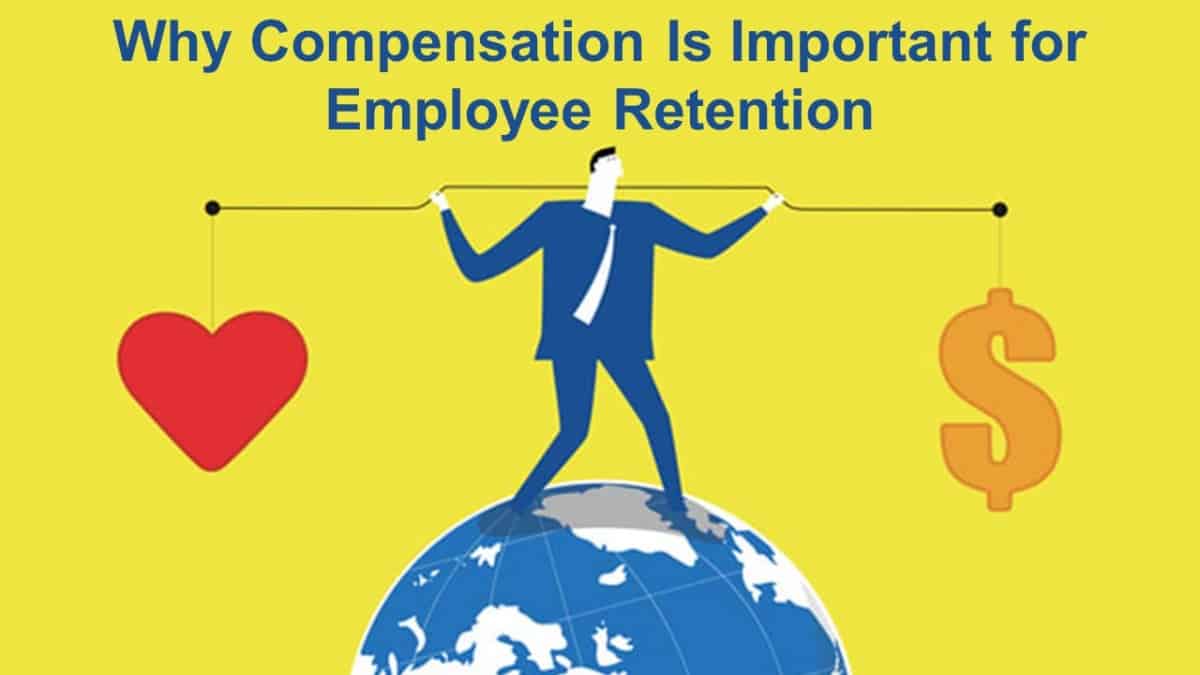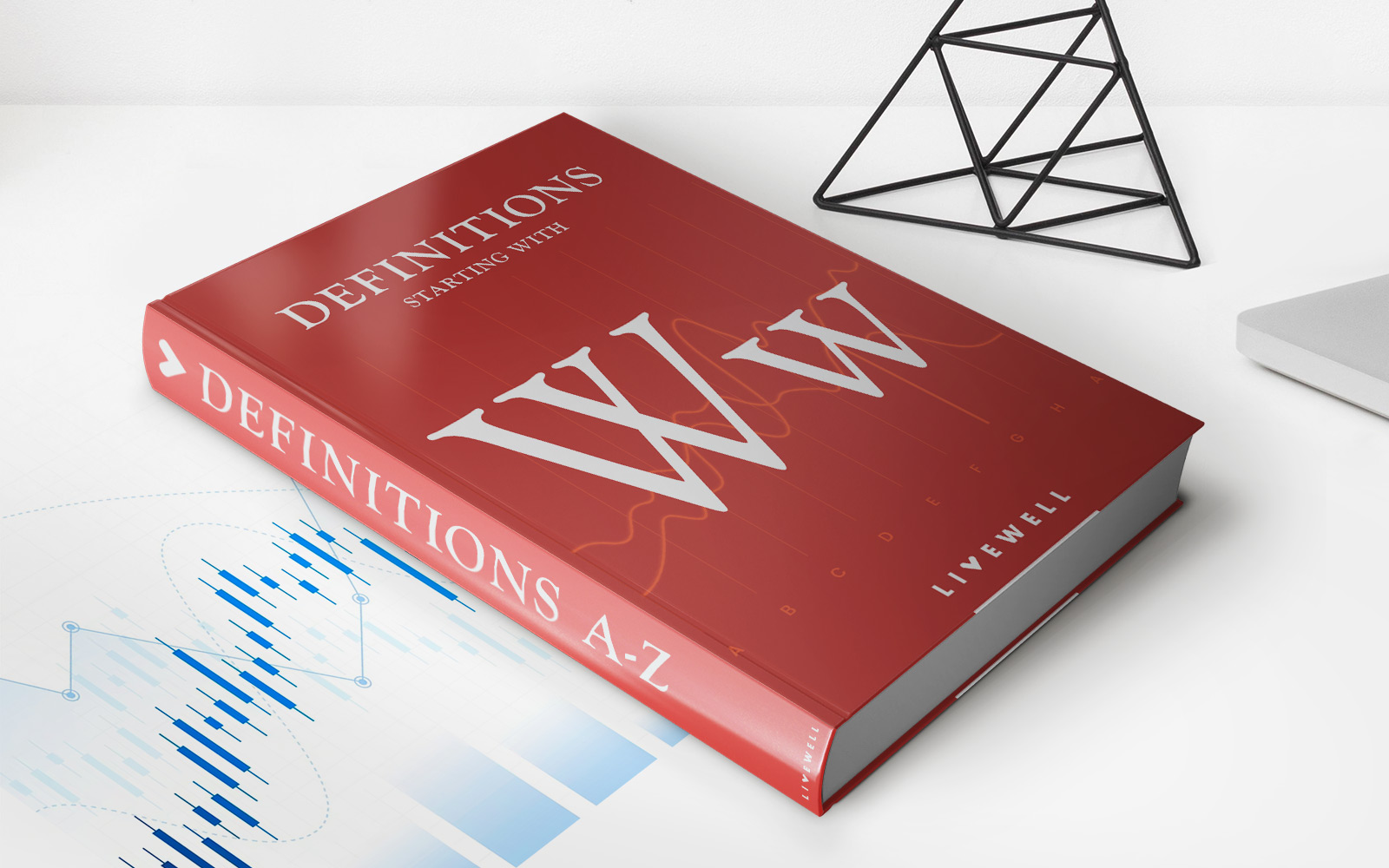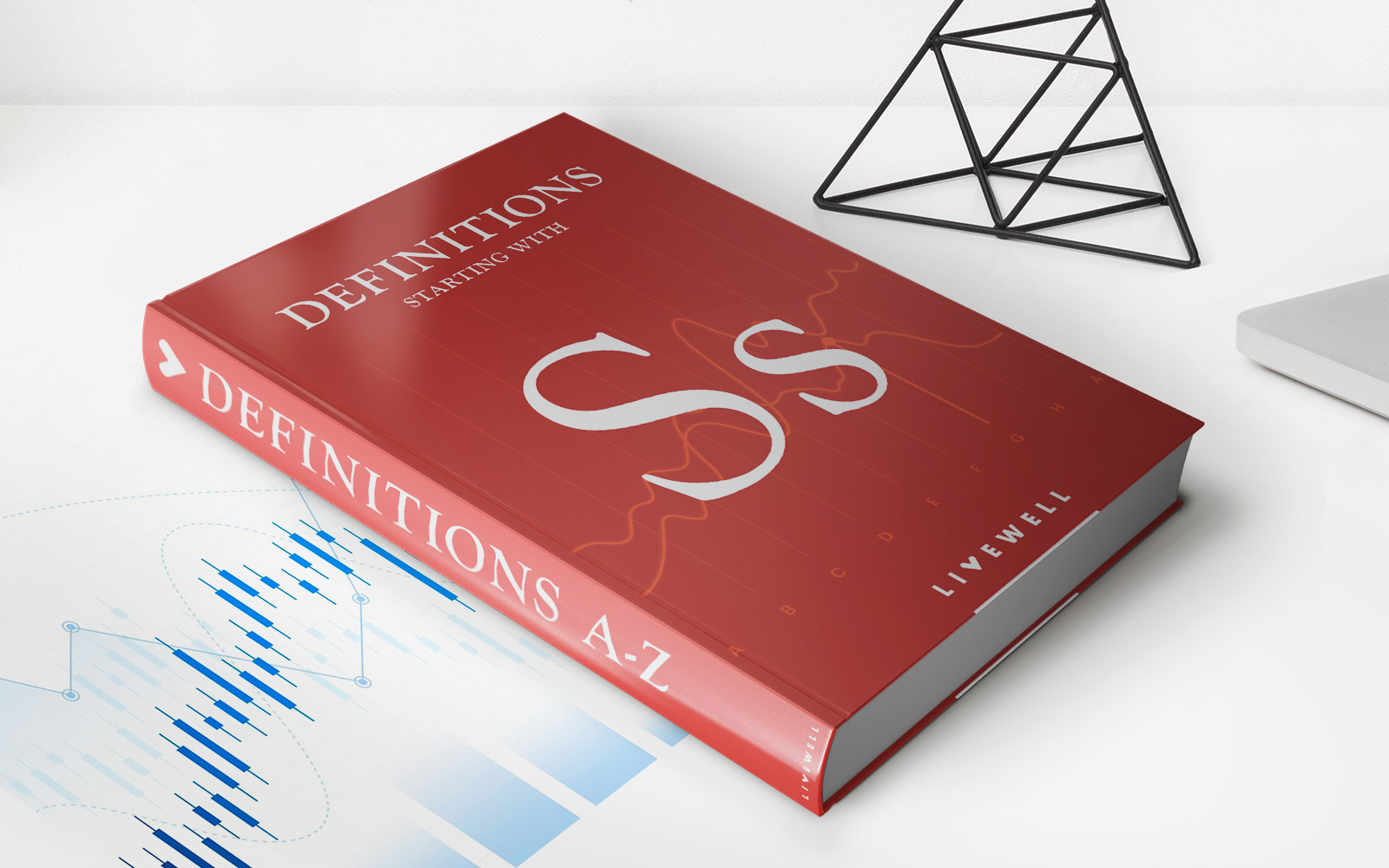

Finance
What Does Primary Insurance Mean?
Published: November 18, 2023
In finance, primary insurance refers to the initial coverage a person or business obtains for a particular risk or asset. Discover the meaning and importance of primary insurance in this comprehensive guide.
(Many of the links in this article redirect to a specific reviewed product. Your purchase of these products through affiliate links helps to generate commission for LiveWell, at no extra cost. Learn more)
Table of Contents
Introduction
When it comes to managing risks and protecting ourselves financially, insurance plays a crucial role. It provides a safety net in the event of unexpected events, giving us peace of mind and financial security. But within the realm of insurance, there are different types and layers of coverage that we need to understand. One important distinction is between primary insurance and secondary insurance.
Primary insurance is the first layer of coverage that individuals or businesses obtain to protect themselves against specific risks. It is the initial line of defense and the first coverage to be accessed in the event of a claim. Understanding what primary insurance entails and how it works is essential to ensure effective risk management and financial protection.
In this article, we will delve deeper into the concept of primary insurance, its definition, how it works, and its importance in comprehensive insurance coverage. We will also discuss the difference between primary and secondary insurance and explore examples to better understand its practical application. So, let’s get started and unravel the intricacies of primary insurance.
Definition of Primary Insurance
Primary insurance refers to the initial layer of coverage that individuals or businesses purchase to protect themselves against specific risks or perils. It is the first line of defense and the primary source of financial protection in the event of a claim. When a covered loss or damage occurs, the insured party will file a claim with their primary insurer to seek reimbursement or compensation.
Primary insurance policies can cover a wide range of risks, including property damage, liability claims, healthcare expenses, and more. The coverage provided by primary insurance is typically specific to the type of policy purchased and the risks outlined within it. For example, homeowners’ primary insurance may cover damage to the structure, personal property, and liability claims, while a primary health insurance policy may cover medical expenses and hospitalizations.
Unlike secondary or excess insurance, primary insurance takes precedence over other layers of coverage. This means that when a claim is filed, the primary insurer is responsible for covering the costs up to the policy’s limits before any secondary insurance comes into play. In most cases, primary insurance policies have defined deductibles, which are the out-of-pocket expenses the insured party must pay before the insurance coverage kicks in.
It is important to note that primary insurance coverage may vary depending on the specific terms and conditions outlined in the policy. Each insurance company has its own set of coverage options and limitations, so it is crucial for policyholders to carefully review their policy and understand the scope of coverage offered.
Overall, primary insurance serves as the foundation of a comprehensive risk management strategy. By obtaining primary insurance coverage, individuals and businesses can protect themselves against potential financial losses and have peace of mind in knowing that they are adequately protected against unforeseen events.
How Primary Insurance Works
Understanding how primary insurance works is essential for individuals and businesses to effectively navigate the claims process and ensure they receive the coverage they need. Here are the key steps involved in how primary insurance functions:
- Purchasing Primary Insurance: Individuals or businesses identify their specific risks and insurance needs and then choose an insurance company or agent to purchase primary insurance coverage. This typically involves researching different insurers, obtaining quotes, and selecting a policy that provides the desired level of protection.
- Paying Premiums: Once a primary insurance policy is selected, the insured party pays regular premiums to the insurance company. Premiums can be monthly, quarterly, or annual payments, depending on the terms of the policy. These premiums contribute to the insurance pool established by the insurer to cover potential claims.
- Experiencing a Covered Loss or Event: When an insured event occurs, such as property damage, liability claims, or medical expenses, the insured party must report the incident to their primary insurance provider. It is essential to promptly notify the insurer to initiate the claims process.
- Submitting a Claim: The insured party must file a claim with their primary insurer. This typically involves providing documentation, such as photographs, medical records, or incident reports, to support the claim. The insurer will review the claim, assess its validity, and determine coverage eligibility according to the terms and conditions of the policy.
- Evaluating the Claim: Once the claim is submitted, the primary insurer will evaluate the damage or loss and determine the appropriate amount of compensation or reimbursement. This evaluation can involve on-site inspections, expert assessments, and other processes to determine the extent of the coverage.
- Settling the Claim: After evaluating the claim, the primary insurer will either approve or deny the claim for coverage. If approved, the insurer will provide the insured party with the agreed-upon compensation or reimbursement. This settlement typically involves reimbursing the insured for the expenses incurred or providing funds to repair or replace damaged property.
- Policy Deductibles and Limits: Primary insurance policies often have deductibles, which are the out-of-pocket expenses the insured must pay before insurance coverage begins. Additionally, primary insurance policies have coverage limits, which are the maximum amount that the insurer will pay for a particular claim. It is important for the insured party to understand these deductibles and limits to ensure they are adequately protected.
- Renewing or Adjusting Coverage: Primary insurance policies typically have a specified term, such as one year. At the end of the term, the insured party can choose to renew the policy, adjusting coverage and premiums as needed. It is important to regularly review and update primary insurance policies to ensure they align with changing needs and circumstances.
By following these steps and understanding how primary insurance works, individuals and businesses can navigate the insurance process more effectively and ensure they receive the coverage they need when it matters most.
Primary Insurance vs. Secondary Insurance
When it comes to insurance, it’s important to understand the distinction between primary insurance and secondary insurance. While primary insurance serves as the first layer of coverage, secondary insurance comes into play as an additional layer of protection. Here’s a closer look at the difference between the two:
Primary Insurance: Primary insurance is the initial layer of coverage that individuals or businesses acquire to protect themselves against specific risks. It is the first line of defense and the primary source of financial protection in the event of a claim. Primary insurance policies are typically more comprehensive and provide broader coverage compared to secondary insurance. In case of a covered loss, the insured party files a claim with their primary insurer first, and the primary insurance policy pays out up to the policy’s limits.
Secondary Insurance: Secondary insurance, also known as excess or supplemental insurance, provides additional coverage on top of primary insurance. It acts as a backup, filling in gaps or providing additional financial protection that may surpass the coverage limits of primary insurance. Secondary insurance generally kicks in after the primary insurance policy’s limits have been exhausted. This means that the secondary insurer will only pay out if the primary insurer has already paid up to its coverage limits.
The primary purpose of secondary insurance is to provide extra coverage when the cost of a claim exceeds the limits of the primary insurance policy. This can be particularly valuable in situations where large or catastrophic claims occur, such as major medical expenses, extensive property damage, or significant liability claims.
It’s important to note that secondary insurance may have its own deductibles, coverage limits, and terms and conditions. It is typically purchased separately from primary insurance and can be obtained from the same insurance company or a different provider.
Overall, the key difference between primary insurance and secondary insurance is that primary insurance is the initial layer of coverage that pays out first, while secondary insurance provides additional coverage beyond the limits of the primary policy. Understanding the distinction between the two is important to ensure comprehensive coverage and effective risk management.
Importance of Primary Insurance
Primary insurance plays a vital role in providing individuals and businesses with essential financial protection and peace of mind. Here are some key reasons why primary insurance is important:
- Risk Mitigation: Primary insurance helps mitigate the financial risks associated with unexpected events. Whether it’s damage to property, liability claims, or medical expenses, primary insurance coverage ensures that individuals and businesses are not solely responsible for bearing the full cost of these risks. It provides a safety net, allowing individuals and businesses to recover and rebuild after a loss or damage occurs.
- Legal Compliance: In many cases, primary insurance is legally required. For example, auto insurance is mandatory in most jurisdictions to protect against potential accidents and liability claims. Likewise, homeowners’ insurance is often required by mortgage lenders to safeguard the property against damage or loss. By having primary insurance coverage, individuals and businesses can comply with legal requirements and avoid potential penalties or legal consequences.
- Financial Security: Primary insurance provides financial security by minimizing the out-of-pocket expenses associated with unexpected events. Instead of having to bear the full financial burden of repairing property damage, covering medical expenses, or settling liability claims, policyholders can rely on their primary insurance coverage to help shoulder these costs. This financial security ensures that individuals and businesses can maintain their financial stability and protect their assets.
- Peace of Mind: Knowing that one is adequately protected by primary insurance brings peace of mind. It eliminates the worry and stress associated with unforeseen events. With primary insurance in place, individuals and businesses can focus on their daily lives and operations, knowing that they have a safety net to rely on in case of an emergency.
- Business Continuity: For businesses, primary insurance is crucial for ensuring continuity in the face of unexpected events. By having coverage for property damage, business interruption, liability claims, and other risks, businesses can recover more quickly and resume operations following a loss. Business insurance may also protect against potential litigation that could otherwise undermine the operation’s sustainability.
Overall, primary insurance is an essential component of a comprehensive risk management strategy. It provides individuals and businesses with the financial protection needed to navigate unexpected events and minimize the impact on their lives, assets, and operations. By having primary insurance, individuals and businesses can face the future with confidence and peace of mind.
Primary Insurance Coverage Limits
Primary insurance policies typically have coverage limits, which are the maximum amounts that the insurer will pay for a particular claim. These limits can vary depending on the type of coverage and the specific terms and conditions of the policy. It’s important for individuals and businesses to understand their primary insurance coverage limits to ensure they have adequate protection. Here’s what you need to know about primary insurance coverage limits:
Determining Factors: Insurance companies consider several factors when determining coverage limits for primary insurance policies. These may include the insured party’s risk profile, the type of coverage being provided, the limits set by regulatory authorities, and the insurer’s own risk assessment. For example, in property insurance, the coverage limit may be based on the estimated replacement cost of the property, while in liability insurance, the limit may be set to protect against potential damages and legal expenses.
Policy Limits and Deductibles: Primary insurance policies often have deductibles, which are the out-of-pocket expenses the insured party must pay before insurance coverage kicks in. The higher the deductible, the lower the premium cost. The coverage limit, on the other hand, is the maximum amount the insurer will pay for a claim. It’s essential to choose coverage limits and deductibles that align with your risk tolerance and financial capabilities.
Regular Evaluation and Adjustments: As circumstances change over time, it’s important to regularly evaluate and adjust primary insurance coverage limits. This ensures that the coverage remains relevant and sufficient for current needs. For example, if property values increase or the business expands, it may be necessary to increase coverage limits to adequately protect against potential losses.
Supplemental Insurance: In certain cases, primary insurance coverage limits may not be sufficient to fully protect against potential risks. In such situations, individuals or businesses can consider obtaining supplemental or excess insurance. These additional policies provide coverage beyond the limits of primary insurance, giving an extra layer of protection against catastrophic events or high-cost claims.
Professional Advice: Understanding primary insurance coverage limits can be complex. It’s advisable to consult with insurance professionals or brokers who can provide guidance on the appropriate coverage limits for your specific needs. They can assess your risk exposure, assist in evaluating limits, and help you find the right balance between premium costs and adequate coverage.
In summary, primary insurance coverage limits define the maximum amount an insurer will pay for a claim. It is essential to review and understand these limits, taking into consideration deductibles and the potential need for supplemental insurance. By doing so, individuals and businesses can ensure they have the appropriate level of coverage to protect against potential financial losses.
Examples of Primary Insurance
Primary insurance encompasses a wide range of coverage types, each serving a specific purpose in protecting individuals and businesses from various risks. Here are some examples of primary insurance policies:
- Homeowners Insurance: Homeowners insurance is a primary insurance policy that protects individuals against property damage, theft, liability claims, and other risks associated with owning a home. It typically covers the dwelling, personal belongings, and liability for accidents that occur on the property.
- Auto Insurance: Auto insurance is a primary insurance policy that provides coverage for damage to one’s vehicle, liability for bodily injury or property damage caused to others, and medical expenses resulting from accidents. This policy is mandatory in most jurisdictions to protect both the policyholder and others on the road.
- Health Insurance: Health insurance is a primary insurance policy that helps individuals manage medical costs. It covers expenses such as doctor visits, hospital stays, medications, and preventive care. Health insurance policies may also include coverage for dental and vision care.
- Business Insurance: Business insurance is a primary insurance policy that protects businesses from various risks, including property damage, liability claims, legal expenses, and business interruption. It can include coverage for property and equipment, general liability, professional liability, workers’ compensation, and more.
- Liability Insurance: Liability insurance is a primary insurance policy that provides coverage against claims of bodily injury or property damage caused by a policyholder or their employees. It protects individuals and businesses from potential lawsuits and the resulting financial damages.
- Renters Insurance: Renters insurance is a primary insurance policy designed for individuals who rent a property. It covers personal belongings, liability claims, and additional living expenses in the event of damage or loss due to covered perils, such as fire, theft, or vandalism.
- Umbrella Insurance: Umbrella insurance is a supplemental primary insurance policy that provides additional liability coverage beyond the limits of other primary insurance policies. It serves as an extra layer of protection against catastrophic events or high-cost claims.
These examples highlight the diverse range of primary insurance policies available to individuals and businesses. By having the appropriate primary insurance coverage, individuals and businesses can proactively manage risks and protect themselves from potential financial losses.
Conclusion
Primary insurance serves as the first line of defense and a critical component of comprehensive risk management. It provides individuals and businesses with the initial layer of financial protection against specific risks. Understanding primary insurance, its coverage limits, and how it works is essential for navigating the insurance landscape effectively. It ensures that individuals and businesses are adequately protected and can mitigate potential financial losses.
From homeowners insurance to auto insurance, health insurance, business insurance, and liability insurance, primary insurance covers a wide range of risks and perils. It provides coverage for property damage, liability claims, medical expenses, and more, depending on the specific policy and its terms and conditions.
Primary insurance differs from secondary insurance in that it is the primary source of coverage and is accessed first when a claim occurs. Secondary insurance, on the other hand, provides additional coverage beyond the limits of primary insurance.
The importance of primary insurance cannot be overstated. It helps individuals and businesses protect their assets, comply with legal requirements, maintain financial security, and have peace of mind. Primary insurance covers essential aspects of life, including homes, automobiles, health, and businesses, ensuring that individuals and businesses can recover from unexpected events and continue to thrive.
When obtaining primary insurance, it is crucial to understand the coverage limits, deductibles, and potential need for supplemental insurance. Regularly evaluating and adjusting coverage ensures that it remains aligned with changing needs and circumstances.
In conclusion, primary insurance is the foundation of a comprehensive risk management strategy, providing individuals and businesses with essential financial protection and peace of mind. By understanding primary insurance, individuals and businesses can make informed decisions, protect their assets, and navigate unexpected events with confidence.














